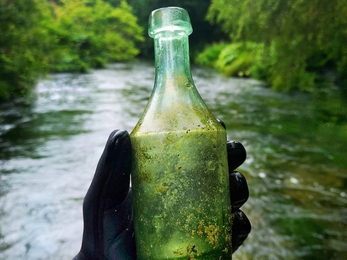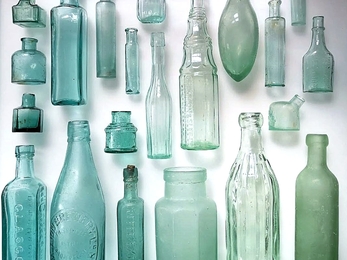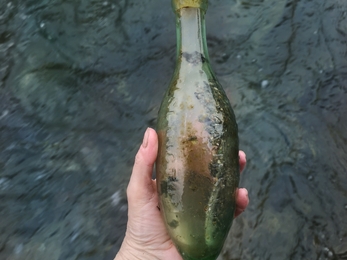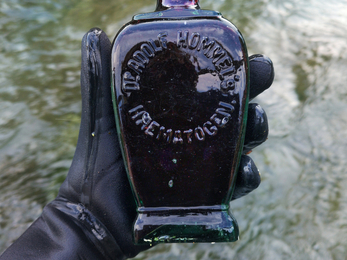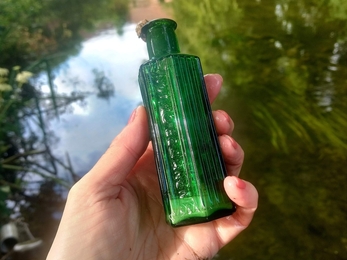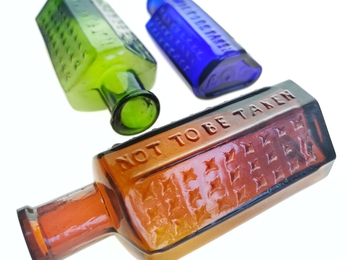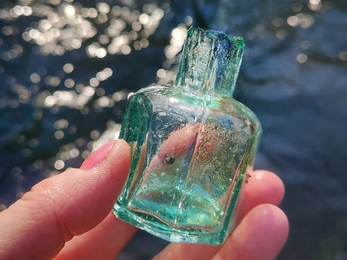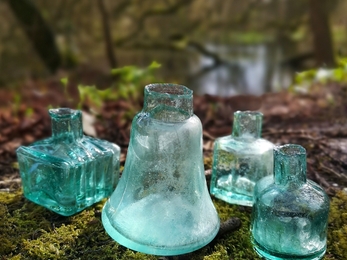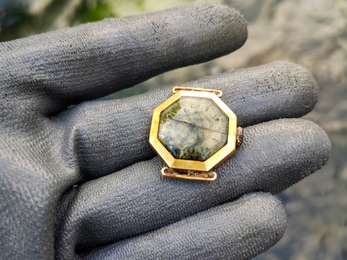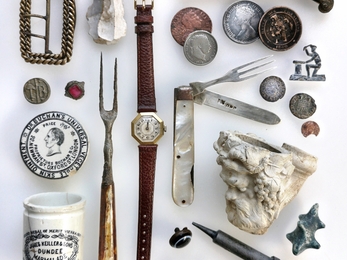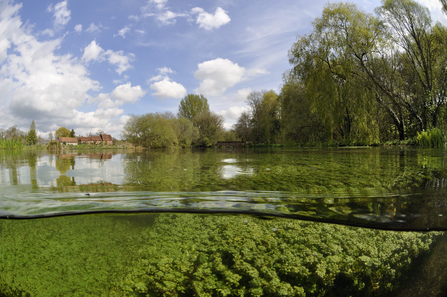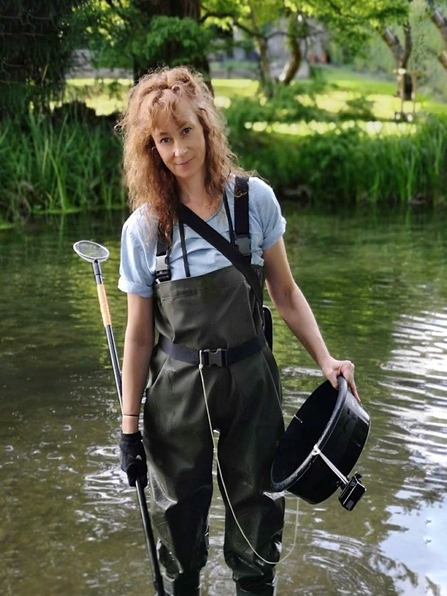
Jane Eastman wading in a chalk stream in summer time © Jane Eastman
Look into a chalk stream near an old house, footpath, or footbridge and you will probably see the odd fragment of 19th century transfer printed pottery. ‘Willow’ pattern dinnerware was once used in almost every Victorian household, and it now flecks the gravel with white and cobalt blue.
Look closer and you may see other objects too. Maybe the edge of an antique stoneware ginger beer bottle, consumed on a warm summer’s day a century ago before being tossed absentmindedly into the water. Or the bowl of an 18th century clay pipe – the cigarette butt of its day – that was smoked by a fisherman standing on the bank. Or a distinctive eight-sided ‘penny ink’ bottle that was used to record the accounts in a mill upstream. All will have slowly tumbled through the decades, and come to rest at your feet.
Over time, bottles, pots, clay pipes, coins, beads, buttons and countless other artefacts have become hidden within the silt and gravel. These objects – fascinating, yet everyday – tell the stories of people who have visited these ancient watercourses for hundreds, if not thousands, of years. This is my favourite pastime: to connect with our recent (and not-so-recent) ancestors through the objects that they lost, forgot, or threw away.
But it’s important to note that my outings aren’t just historical (and sometimes modern) litter picks: it’s a privilege to enjoy the local landscape from this unique perspective; to be immersed in a river that’s thriving and teeming with life. Without a doubt, it is this experience of being in the beautiful chalk stream environment which I take home as the ultimate ‘treasure’.
Pictured below (click to expand): A mid 19th century aqua glass ginger beer bottle / A selection of river found antique bottles.


